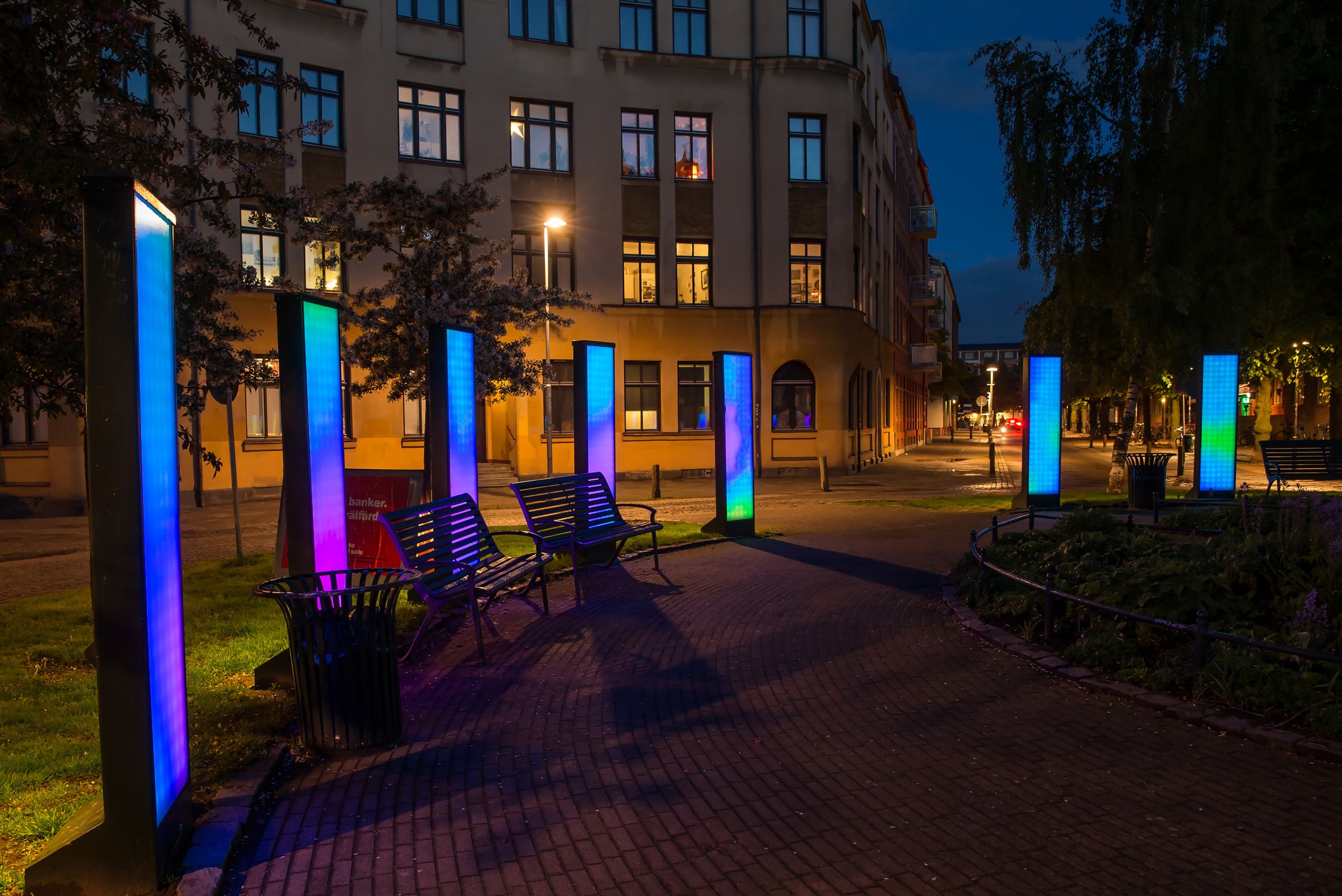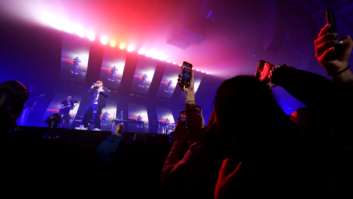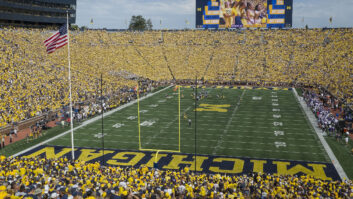
A roundabout in the city of Malmö, Sweden, has become a scene from Douglas Adams’ famous book, the Hitchhiker’s Guide to the Galaxy, after SGM LED lighting was installed as part of a special project at the site.
Lighting designers Bo Andersson and Johan Moritz were hired by the City of Malmö to update the 2004 system and create an artistic meeting place for residents of the urban area. The pair selected SGM Lighting’s LP-7000 LED Pix for the installation after Mikael Uddh from SGM Sweden suggested theLED lighting solution as best fit for purpose.
The installation, which was handled by Malmö-based Live Media Group, comprises 20 cabinets with three LP-700 strings in each. A single string incorporates 56 RGB LED pixels in a chain measuring 6.75m and provides a pixel pitch of 120mm. The solutions features a show controller feeding ArtNet to DMX, as well as all cabling.
“The LP-700s were pre-mounted on customised plastic frames to fit the original design of the cabinets. The frames were also prepared with DC power supply and an ArtNet node to translate the ArtNet DMX into three universes of DMX to the LP-700,” commented Uddh.
The concept is from the scene in the Hitchhiker’s Guide to the Galaxy where a man builds in a four-walled house turned inside out. Thus the door that people would be inclined to take into the house opens into a lawn with benches and pedestrian pathways.
“It seems to be a stable product that delivers the quality the City of Malmö was seeking,” said Moritz, who was employed by the city of Malmo and acted as part artist, part lighting designer. “It also fulfills the resolution in accordance with this task – at a reasonable price”,
“With this installation we have tried to represent the make-up of the inhabitants of Malmö in a both relaxing and contemplative way,” Moritz.
This installation is fully operational every day of the year (during the dark hours) – adding up to approximately 4,200 hours a year of operation.







